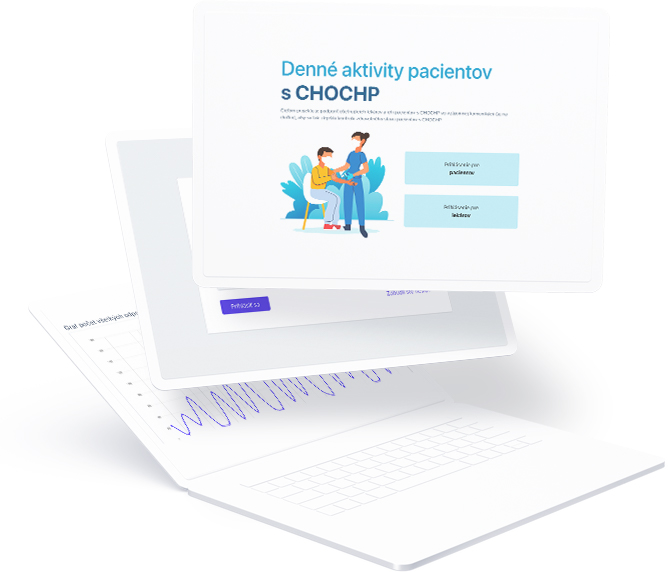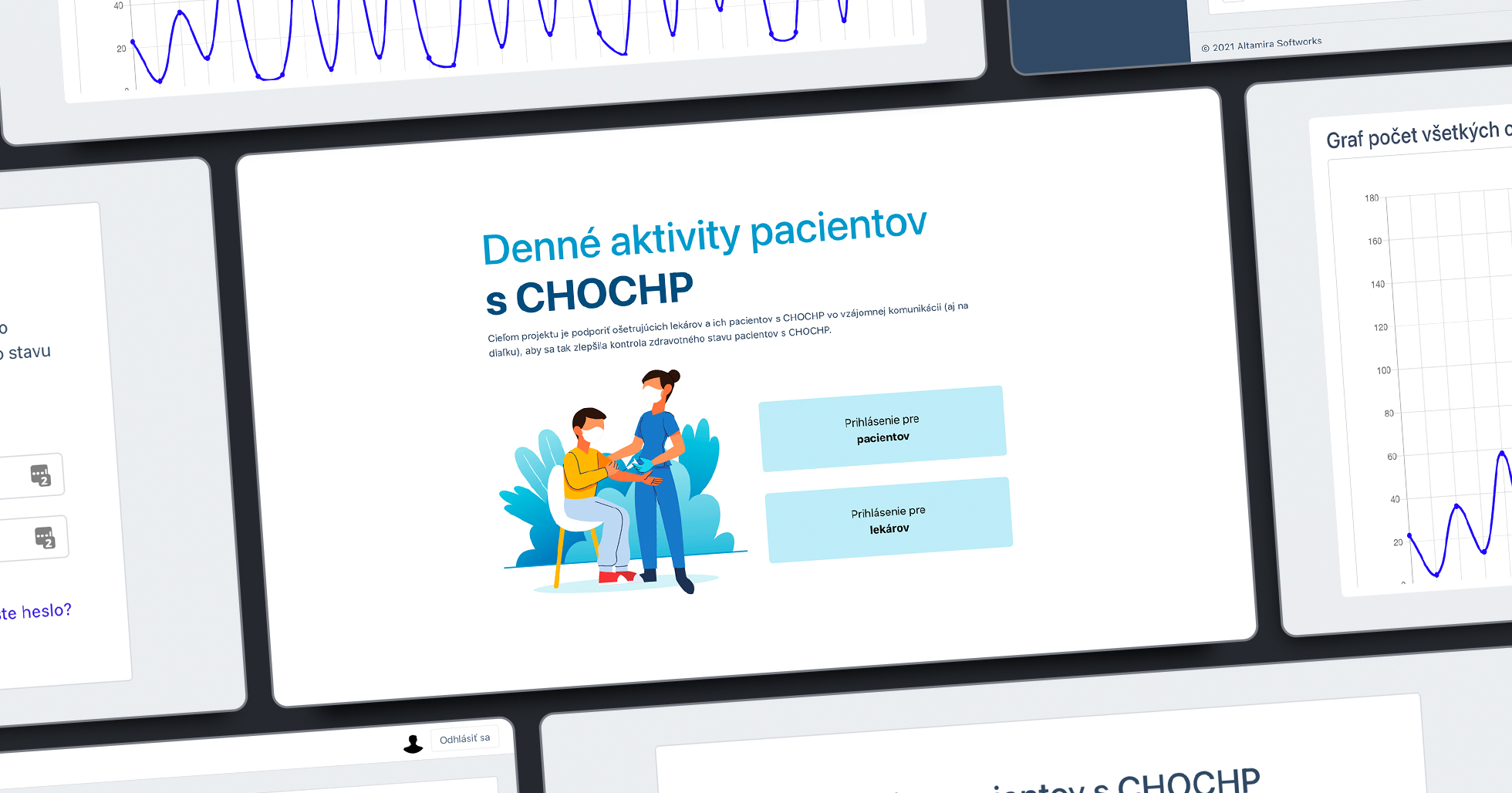Electronic health monitoring of COPD patients Boehringer Ingelheim
Software that connects doctors and patients through electronic health monitoring.

About Boehringer Ingelheim
Due to the limitation of interpersonal contact in connection with the pandemic, many healthcare professionals have expanded the organisation of treatment monitoring online. Electronic health monitoring has provided improved access to treatment for at-risk patients thanks to frequent doctor visits.
During the pandemic, in cooperation with a major pharmaceutical company, we implemented a project between patients with chronic obstructive pulmonary disease (COPD) and their attending physicians. Boehringer Ingelheim aimed to improve communication between doctors and patients. In addition, the project aimed to draw attention to real-time analysis of the patient's health status using a technological solution in healthcare.
Scope
Discovery phase
Product development
Maintenance
Quality Assurance
Vertical
Key results
- System monitors the patient’s condition several times a week via SMS messages
- It notifies the attending physician of any health deterioration
- It also generates interesting analysis and statistics
See what Altamira can do for you
01
The Challenge
COPD patients are often unaware of their deteriorating health. They only have regular check-ups with the doctor at certain intervals so that the doctor may adjust the treatment later.
COPD is a chronic disease that requires regular check-ups by a doctor. With this type of diagnosis, it often happens that the patient underestimates the ongoing control. In addition, the period of the pandemic has made it difficult to see a doctor. As the treatment of COPD is in the hands of pulmonologists, who were severely overwhelmed by patients with COVID-19 during the pandemic period, this is doubly true. We have therefore developed a solution that helps monitor health status digitally and partially replaces the absence of physical examinations at the doctor’s.

The average age of the monitored patients was around 60 years, so we tried to make it as easy to answer and log in to the system as possible. The patient received the login details from his doctor, which they entered on the website in case they needed to fill in a questionnaire. The login could be saved, so the username and password were required from patients only once. As many as 88% of sent SMS messages received a response from patients, which documents that the chosen model works. Even less technologically proficient users were not only able to work with the system but were also willing to provide data regularly. Patients with deteriorating conditions could complete the questionnaire several times in a row, which provided valuable data on the subjective development of their health status. We tried to make the questionnaire as simple as possible so that the patient could fill it in quickly and provide the doctor with the necessary information.
One of the challenges of this project was the advanced age of the respondents, another was the doctors themselves and their technical capabilities. Not all physicians are digitalised, and not all want to address their patients’ health online despite the undeniable benefits for the patient.
The aversion to digital devices in the healthcare industry has, therefore, prompted us to develop the simplest website possible, in which a doctor would have access to the most important information as soon as they log on.
02
The Solution
We used the Laravel framework and the MariaDB database for development. These technologies have enabled us to develop a solution that ensures reusability and rapid response to changes during the project’s operation.
We used simple, ordinary SMS messages to monitor patients’ health electronically. We had to think about the technological skills of the older target group, which we did not expect to be so flexible and to access the system through a mobile app or a computer. So, we wanted to maximise the number of responses by making the whole process comfortable for the patient. That’s why we have integrated an SMS gateway that allows you to send thousands of SMS messages in a short time. Over four weeks, we sent out thousands of SMS messages.
As the questionnaires were multilevel, some answers could be followed by another question. Based on how the client answered, we sent another question using a system for periodic event triggering, the so-called cron job.
The system can also generate interesting analyses and statistics on the development of the patient’s health, which their attending physician can see in a clear graph and take appropriate steps in the patient’s treatment, e.g., change his treatment.
Strive for excellence with Altamira
Join our community of successful customers, whom we helped to build and grow their businesses.
03
The Result
Electronic health monitoring was completed after the specified period. Our Client, Boehringer Ingelheim evaluated it very positively, as they received valuable data that serves as a basis for decision-making processes. Thanks to this survey, we identified several monitored patients whose health was subjectively deteriorating. As a result, the doctor was informed and could make timely decisions. The project could prolong the quality of life, as it captured changes in health so quickly that the doctor could stabilise the patient by adapting the treatment.
Our solution opens the door to a discussion on the possibility of using digitisation in healthcare. The connection of modern technologies with healthcare helps doctors diagnose and adjust treatment. For patients, such modernisation can mean early diagnosis or treatment change to prevent further complications.




